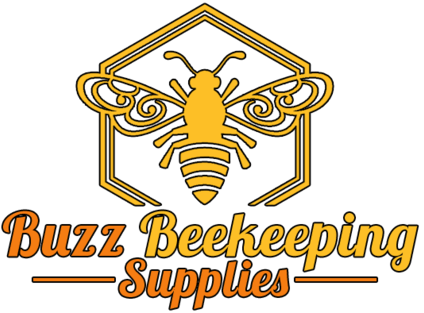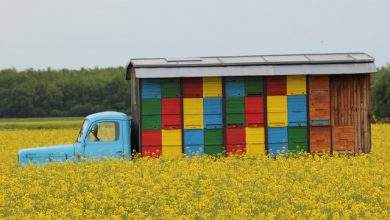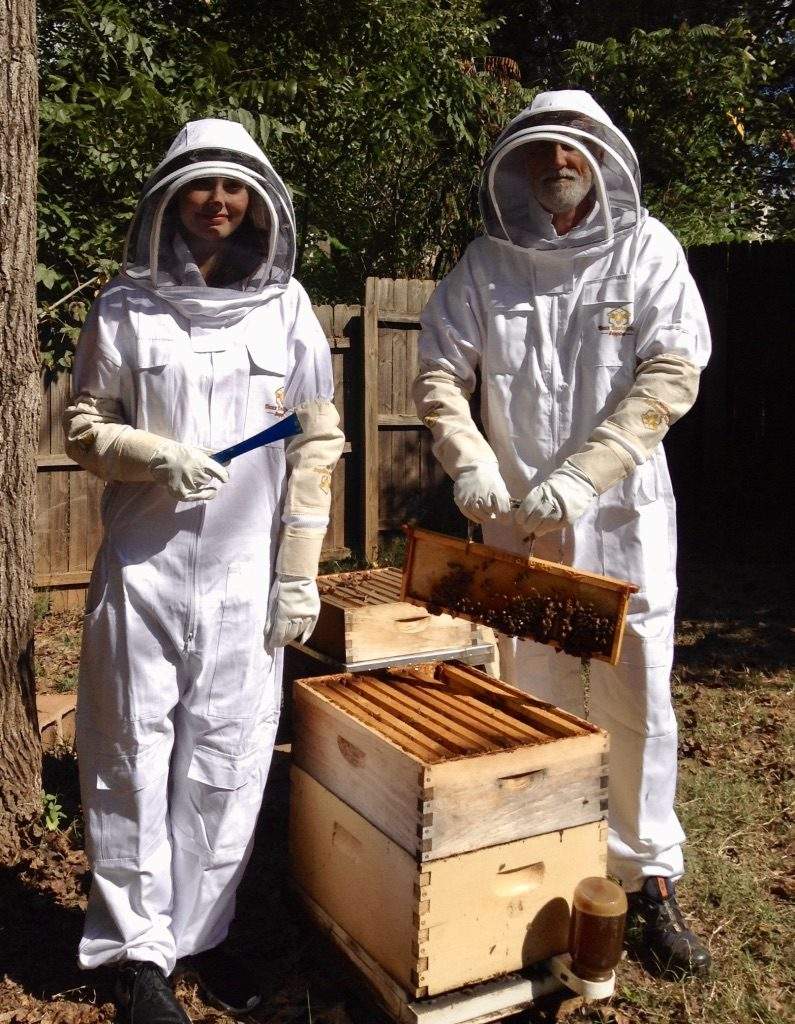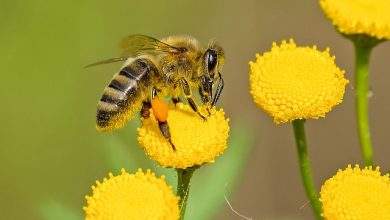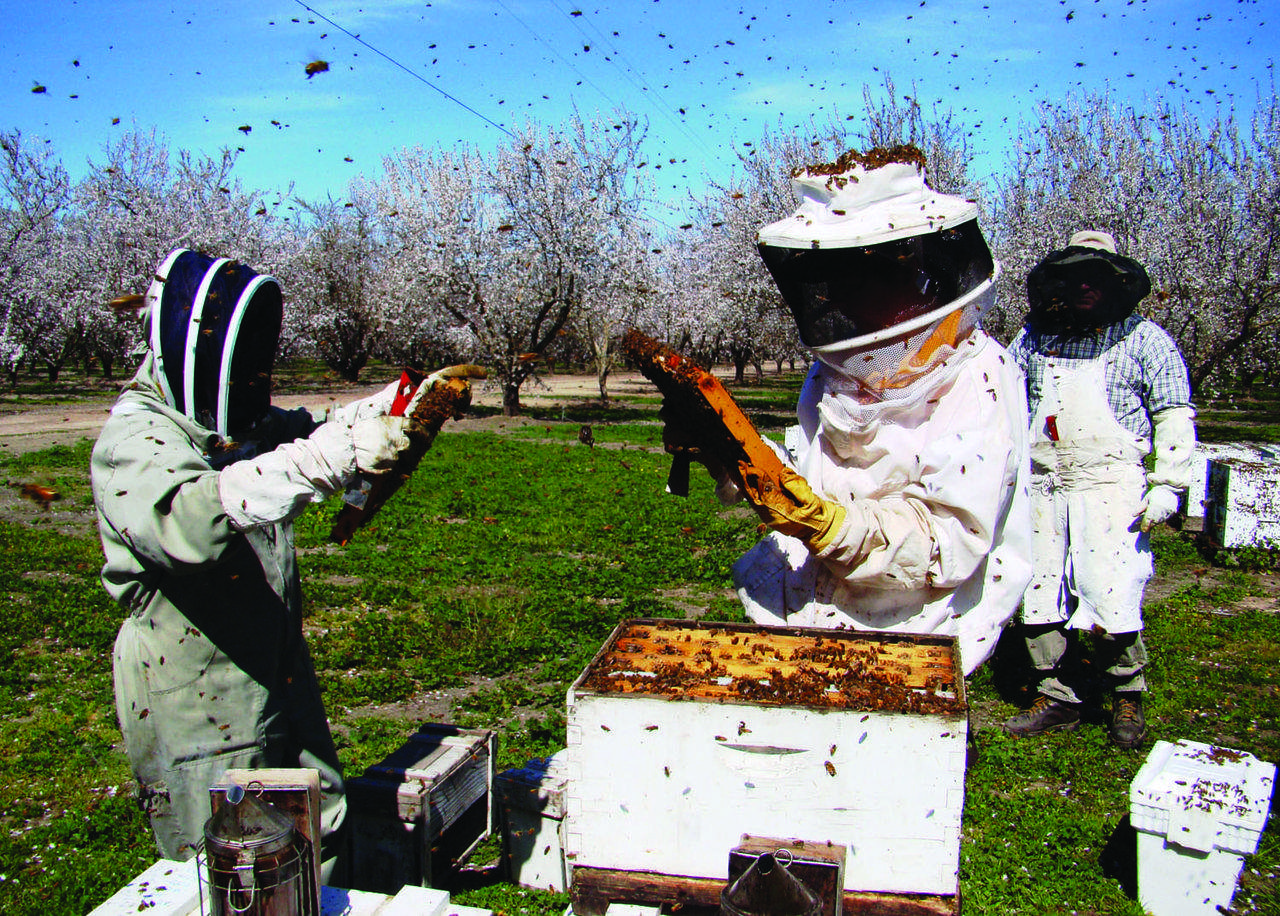Tips for Maintaining Beekeeping Supplies
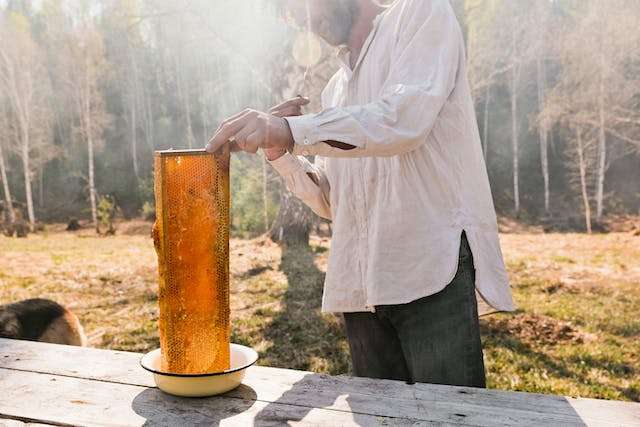
Beekeeping is a captivating and rewarding hobby or profession that requires dedication and careful management. As any skilled beekeeper knows, the success of a colony greatly depends on the availability and proper maintenance of beekeeping supplies.
In this article, we will explore important tips for maintaining beekeeping supplies to ensure a thriving and sustainable beekeeping operation.
Why Maintaining Beekeeping Supplies Matters
Ensuring the Health of Bee Colonies:
- Beekeeping supplies play a fundamental role in promoting the overall health and vitality of bee colonies.
- Regularly inspecting and maintaining equipment allows for early detection of issues such as disease, mites, or parasites, preventing them from spreading among the bees.
- Properly functioning supplies, such as hives and frames, provide a sturdy and comfortable home for the bees, facilitating their growth and development.
Enhancing Honey Production:
- Well-maintained beekeeping equipment contributes to increased honey production.
- Maintaining clean and intact frames and combs allows bees to efficiently store honey and raise brood, resulting in healthier and more productive colonies.
- Preventing contamination or damage to the equipment ensures the quality and purity of the honey harvest.
Promoting Beekeeper Safety:
- Regularly inspecting and maintaining beekeeping supplies safeguards the beekeeper’s well-being.
- Tools such as protective clothing, smokers, and hive tools should be routinely checked for any defects to prevent accidents during hive inspections and honey extraction.
- Well-maintained equipment reduces the risk of bee stings and other potential hazards, ensuring a safer beekeeping experience.
Overview of Essential Beekeeping Supplies:
Hive Components:
- The hive serves as the bees’ home and consists of several crucial components, including the bottom board, hive bodies or supers, frames, and covers.
- Regularly inspect and clean these components to ensure a hygienic and comfortable environment for the bees.
Tools and Protective Gear:
- Beekeeping requires specific tools and protective gear to handle bees and manage the hive effectively.
- Essential tools include hive tools, smokers, bee brushes, and queen catchers, while protective gear comprises bee suits, gloves, veils, and boots.
- Clean and maintain these tools after each use to prolong their lifespan and minimize the transmission of diseases.
Extracting Equipment:
- Extracting honey requires specialized equipment, such as honey extractors, uncapping knives, strainers, and containers.
- Regularly clean and sanitize these tools to maintain the integrity and quality of the honey harvest.
Proper Storage of Beekeeping Supplies
One of the key factors in maintaining the quality and longevity of your beekeeping supplies is proper storage. Whether you are a novice or experienced beekeeper, understanding the importance of storing your equipment correctly is essential.
Importance of Proper Storage:
Proper storage of beekeeping supplies is crucial for several reasons:
- Maintaining Equipment Quality: Storing your beekeeping equipment correctly helps prolong its lifespan, preventing degradation or damage that may occur due to exposure to external elements.
- Minimizing Disease Transmission: Adequate storage prevents the accumulation of contaminants and reduces the risk of disease transmission among your bee colonies.
- Cost-Effectiveness: By preserving the quality of your equipment, you avoid the need for frequent replacements, saving you money in the long run.
Recommended Storage Conditions:
To ensure the best preservation of your beekeeping supplies, it is important to provide the following storage conditions:
- Dry Environment: Choose a storage area that is free from moisture and humidity, as these conditions can accelerate equipment corrosion and mold growth.
- Cool Temperatures: Aim for a stable and moderate temperature in your storage space, avoiding extreme heat or cold, as they can negatively impact the quality of the supplies.
- Protection from Sunlight: Sun exposure can cause damage to certain materials used in beekeeping equipment. Therefore, it is essential to store supplies in a dark or shaded area.
Tips for Storing Beekeeping Supplies:
- Clean and Disinfect: Before storing your equipment, ensure that it is thoroughly cleaned and disinfected to eliminate any potential pests, pathogens, or debris.
- Organize and Label: Maintain a systematic approach by organizing your supplies and labeling them appropriately. This will make it easier to find and access specific items when needed.
- Utilize Proper Containers: Use sealed containers or storage units that protect your equipment from dust, pests, and moisture. Consider using plastic bins, airtight bags, or specialized storage solutions designed for beekeeping supplies.
Proper Storage for Different Types of Beekeeping Supplies:
- Wooden Equipment: Store wooden frames, hive bodies, and other similar items in a dry area to prevent warping or rotting. Applying a coat of wax or propolis to wooden components can help preserve their quality.
- Protective Gear: Beekeeping suits, gloves, and veils should be stored in a clean and dry environment to prevent odors, mold, or mildew growth. Hanging or folding them properly helps maintain their shape.
- Extracting Equipment: Clean honey extractors and other extracting equipment thoroughly after use. Store them in a dry area to avoid rust development, which could contaminate honey during future extractions.
Common Mistakes to Avoid in Storage:

- Neglecting Cleaning: Failing to clean equipment before storage can lead to the buildup of contaminants, pests, and diseases, compromising the health of your bees.
- Storing Wet or Damp Equipment: Moisture trapped in storage containers can encourage the growth of mold, mildew, and rust.
- Disorganized Storage: Poor organization can lead to misplaced or damaged equipment, wasting time and resources when searching for specific supplies.
Proper storage practices play a vital role in maintaining the condition and longevity of your beekeeping supplies. By ensuring that your equipment is stored in optimal conditions, regularly cleaned, and protected from potential hazards, you promote a healthy and productive environment for your bees.
Regular Cleaning and Maintenance of Beekeeping Supplies
In the world of beekeeping, maintaining the cleanliness and optimal condition of your supplies is crucial for the health and productivity of your honey bees. Regular cleaning and maintenance should be an essential part of every beekeeper’s routine.
Significance of Regular Cleaning and Maintenance:
- Health of Honey Bees: Keeping your supplies clean and well-maintained ensures the health and well-being of your honey bees. Regular cleaning helps reduce the risk of diseases or pests that can negatively impact their colonies.
- Hive Performance: Maintaining cleanliness promotes an ideal hive environment, allowing bees to thrive and carry out their vital tasks efficiently. A clean hive can enhance honey production, increase pollination rates, and improve overall colony productivity.
- Prevention of Contamination: Regular cleaning minimizes the chances of contamination, such as the accumulation of mold, bacteria, or harmful chemicals. Clean equipment mitigates the risk of introducing unwanted substances into the hive, safeguarding both the bees and the quality of honey produced.
Cleaning and Maintenance Schedule:
- Hive Components: It is recommended to clean hive components, such as hive bodies, frames, and foundation, at least once a year. Ideally, this should be done during the late winter or early spring when the colony is less active.
- Protective Gear: All protective gear, including veils, gloves, and suits, should be cleaned and inspected after each use. Promptly remove any propolis, wax, or debris to ensure they are ready for future beekeeping activities.
- Honey Extraction Equipment: Extracting honey can leave equipment sticky and in need of thorough cleaning. Clean honey extractors, filters, and containers immediately after use to prevent the honey from attracting pests or fermenting.
Tips for Cleaning and Maintaining Beekeeping Supplies:
- Use Gentle Cleaning Techniques: Avoid harsh chemicals or abrasive cleaning agents that may leave residues harmful to bees. Instead, opt for natural, bee-friendly cleaners like vinegar or mild soap solutions when cleaning hive components or protective gear.
- Proper Storage: Store your beekeeping supplies in a dry and well-ventilated area to prevent moisture buildup or infestation. Ensure that boxes, frames, and other equipment are kept safe from pests or rodents during long periods of non-use.
- Regular Equipment Inspections: Perform routine inspections of all your beekeeping supplies to identify signs of damage, wear, or outdated components. Replace or repair any faulty equipment promptly to maintain a safe and functional beekeeping operation.
Types of Cleaning Products to Use:
- Vinegar: Diluted white vinegar is a versatile and natural cleaning agent suitable for various beekeeping supplies. It effectively removes dirt, wax, and propolis without leaving harmful residues.
- Mild Soap Solutions: Gentle, biodegradable soaps can be used for cleaning protective gear, such as beekeeping suits, veils, and gloves. Thoroughly rinse them after cleaning to ensure no soap residue remains.
- Hot Water: Hot water is often sufficient for routine cleaning of many beekeeping supplies. Its heat helps to loosen and remove debris, wax, or propolis. Combine hot water with vinegar or mild soap for more effective cleaning when necessary.
Benefits of Proper Cleaning and Maintenance:
- Healthier Bees and Stronger Colonies: Regular cleaning and maintenance contribute to the overall well-being of your bees, reducing the risk of diseases and promoting healthy hive conditions. It helps establish a thriving colony capable of fulfilling its pollination and honey production roles effectively.
- Enhanced Honey Quality: By ensuring that your beekeeping supplies are clean and well-maintained, you guarantee that the honey produced remains pure and uncontaminated. This results in higher-quality honey that is safe for consumption and possesses all the natural flavors and benefits sought by consumers.
- Longevity of Equipment: Regular upkeep extends the lifespan of your beekeeping supplies. By cleaning and maintaining them properly, you can expect them to function optimally for more extended periods, saving costs in the long run.
Regular cleaning and maintenance are vital components of successful beekeeping. By recognizing the significance of cleanliness, following a proper schedule, implementing effective cleaning techniques, utilizing suitable cleaning products, and embracing the benefits of proper upkeep, you contribute to the overall health and productivity of your honey bees.
Inspection and Repair of Beekeeping Supplies
Beekeeping supplies are an essential component in maintaining a thriving hive. From hives to frames and protective gear, these supplies require regular inspection and occasional repairs to ensure the well-being of your bees.
Importance of Regular Inspection:
Regular inspection of your beekeeping supplies is crucial for several reasons. Firstly, it ensures the safety and health of your bees. By identifying any issues promptly, you can prevent the spread of diseases and parasites. Secondly, regular inspections help maintain the longevity of your supplies, preventing sudden failures that may harm both your bees and your investment.
Lastly, inspections offer beekeepers an opportunity to assess the overall condition of their hives and make necessary adjustments for optimal beekeeping practices.
How to Inspect Beekeeping Supplies:
- Start by gathering all necessary equipment, including a hive tool, smoker, protective clothing, and a notebook for recording observations.
- Begin your inspection by carefully opening the hive, paying attention to any signs of aggression from the bees.
- Assess the overall condition of the hive structure, examining for cracks, rot, or any damage that may compromise its stability.
- Inspect the frames, checking for signs of mold, disease, or damage.
- Examine the comb for signs of brood pattern and honey production.
- Observe the bee population and their behavior, noting any abnormalities.
- Finally, document your findings and make any necessary adjustments or repairs.
Identifying Signs of Wear and Tear:
- Look for cracks or splits in the wooden components of your hives.
- Check for loose or missing screws, nails, or staples that hold your hive together.
- Inspect frames for signs of rot, warping, or cracks that can compromise the structure.
- Observe for frayed or torn protective gear, such as veils, gloves, or suits.
- Check the condition of your smoker, ensuring it is free of rust and the bellows function properly.
- Examine any other equipment or tools you use regularly, looking for signs of deterioration or damage.
Tips for Repairing Beekeeping Supplies:
- For minor cracks in wooden components, use waterproof wood glue or epoxy to mend them.
- Replace any broken or damaged frames to maintain the integrity of the hive.
- Secure loose or missing fasteners with appropriate screws, nails, or staples.
- Repair protective gear by sewing, patching, or replacing damaged parts.
- Clean and maintain your smoker regularly, replacing worn-out parts if needed.
- Consider sanding and re-painting wooden components to protect them from further wear and tear.
When to Seek Professional Help:
While many repairs can be handled by the beekeeper, there are instances when it’s best to seek professional assistance:
- Severe hive damage, such as extensive rot or decay, may require the expertise of a skilled carpenter.
- If you are unsure about identifying and treating diseases or pests, consult with a qualified beekeeping specialist.
- Larger scale repairs or replacement of complex equipment should be entrusted to professionals, ensuring proper functionality and safety.
Regular inspection and repair of your beekeeping supplies are essential practices for every beekeeper. By carefully assessing the condition of your hives, frames, protective gear, and other equipment, you can address issues promptly, maintain beehive health, and extend the lifespan of your supplies.
Replacement of Worn-Out Beekeeping Supplies
Keeping honeybees is a rewarding and fulfilling endeavor that requires the use of various supplies and equipment. However, as with any tools, beekeeping supplies can also wear out over time, affecting the productivity and health of your honeybee colonies.
Signs of Worn-Out Beekeeping Supplies:
Hive Components:
- Cracks, warping, or rotting in wooden hive bodies, frames, or foundation.
- Broken or missing hardware such as nails, screws, or frame assembly parts.
- Insect or mold infestations in wooden components.
- Deep scratches or rust on metal hive components.
Beekeeping Tools:
- Bent or broken hive tools, smokers, or frame grips.
- Dull or damaged blades on hive knives or uncapping tools.
- Stiff or dysfunctional mechanisms on equipment like honey extractors or bee brushes.
Importance of Timely Replacement:
Worn-out beekeeping supplies can negatively impact the overall health and productivity of your honeybee colonies. Timely replacement is crucial to maintain optimal conditions for your bees. Here are a few reasons why:
Colony Health:
- Worn-out hive components may harbor diseases, pests, or pathogens, increasing the risk of infection for your bees.
- Damaged frames or foundation can affect brood patterns and hinder proper honey production.
Beekeeper Efficiency:
- Functioning tools and equipment make hive inspections, honey extraction, and other beekeeping tasks easier and more efficient.
- Well-maintained supplies prevent accidental damage to bees during routine operations.
Tips for Identifying When to Replace Supplies:
Knowing when to replace beekeeping supplies is essential to ensure the well-being of your honeybee colonies. Here are some helpful tips to assist you in determining when it’s time for a replacement:
Regular Inspections:
- Conduct routine inspections of your hives to identify signs of wear and tear in the equipment and hive components.
- Look for cracks, breakages, or signs of decay during inspections.
Track Usage:
- Keep records of the age and usage of your supplies, especially frames, foundation, and tools with a Beekeeping Journal.
- Monitor their condition over time and note any deterioration or damage.
Consider Beekeeper Experience Level:
- Novice beekeepers may need to replace supplies more frequently as they learn proper handling techniques.
- Beginners may inadvertently cause more wear and tear due to inexperience.
Cost-Effective Ways to Replace Supplies:
Replacing worn-out beekeeping supplies doesn’t have to break the bank. Here are some cost-effective approaches to restocking your beekeeping tools and equipment:
DIY Repairs:
- For minor damages, such as broken hive tool handles or loose frames, consider repairing them yourself.
- Use basic woodworking skills to fix cracks and warping in wooden components.
Local Beekeeping Associations or Clubs:
- Reach out to local beekeeping associations or clubs for potential equipment swaps or discounts.
- Networking with fellow beekeepers can provide affordable options for acquiring used but functional supplies.
Seasonal Sales or Clearance:
- Take advantage of seasonal sales or clearance events in beekeeping supply stores.
- Purchase discounted supplies during offseasons to save money without compromising quality.
Options for Recycling or Repurposing Old Supplies:
Instead of discarding worn-out beekeeping supplies, consider recycling or repurposing them. Here are some ideas to give your old supplies a new lease on life:
Construction or Gardening Supplies:
- Use damaged hive bodies or frames as a source of wood for small construction or gardening projects.
- Broken frames can be repurposed as plant stakes or trellises.
Swarm Traps or Bait Hives:
- Convert worn-out hive boxes into swarm traps or bait hives, attracting and capturing swarms to expand your beekeeping operation
Regular inspections and timely replacement of worn-out beekeeping supplies are essential for maintaining healthy honeybee colonies and ensuring the efficiency of your beekeeping operation.
Conclusion
Effective maintenance of beekeeping supplies plays a pivotal role in the success and sustainability of your beekeeping venture. From regular hive inspections to proper sanitization and storage of equipment, diligent upkeep ensures the longevity of your supplies while promoting the health and productivity of your bee colonies.
By following the tips provided in this chapter, you can confidently maintain and care for your beekeeping supplies, enabling a thriving and rewarding beekeeping experience.

Frequently Asked Questions for Tips on Maintaining Beekeeping Supplies:
What are the essential beekeeping supplies that need regular maintenance?
- Beekeeping supplies that require regular maintenance include beehives, frames, protective clothing (suits, veils, gloves), smokers, and hive tools.
What measures should be taken to maintain the cleanliness of beekeeping equipment?
- To maintain cleanliness, it is crucial to regularly clean beehives, frames, and beekeeping tools. This can be done by scraping off propolis, wax, and other debris, followed by sanitizing them with a mild bleach or vinegar solution.
How can protective clothing be properly maintained?
- Protective clothing should be carefully inspected after each use. Any signs of damage or wear, such as tears or loose stitching, should be repaired promptly. Regular washing in mild detergent and line drying can help maintain their integrity.
Why is proper storage important for beekeeping supplies?
- Proper storage is important for beekeeping supplies to prevent damage, maintain quality, and ensure their functionality. Storing supplies in dry, well-ventilated areas can prevent mold and mildew growth, while protecting them from direct sunlight and extreme temperatures can prevent degradation.
How often should beekeeping supplies be cleaned and maintained?
- Beekeeping supplies should be cleaned and maintained on a regular basis to prevent the buildup of harmful bacteria and parasites. Developing a cleaning schedule and practicing proper hygiene when handling supplies can help ensure their cleanliness and prevent the spread of diseases among bee colonies.
Are there any specific storage requirements for beekeeping supplies during the off-season?
- During the off-season, beekeeping supplies should be stored in a dry and well-ventilated area, protected from extreme temperatures. It is advisable to store frames and hive boxes in airtight containers to prevent infestations by pests.
How can wooden hive components be preserved against weathering?
- Wooden hive components can be preserved by applying a high-quality exterior paint or wood sealant. Routine inspections should be conducted to identify any cracks or damage that may require immediate repair.
When should beekeeping supplies be replaced?
- Beekeeping supplies should be replaced when they show signs of wear and tear such as rust, warping, or cracks. Timely replacement is crucial for maintaining a well-functioning and healthy beekeeping operation. Identifying cost-effective ways to replace supplies and repurposing or recycling old supplies can help beekeepers maintain a sustainable operation.
Remember, proper maintenance of beekeeping supplies is crucial for the long-term success of beekeeping endeavors.
